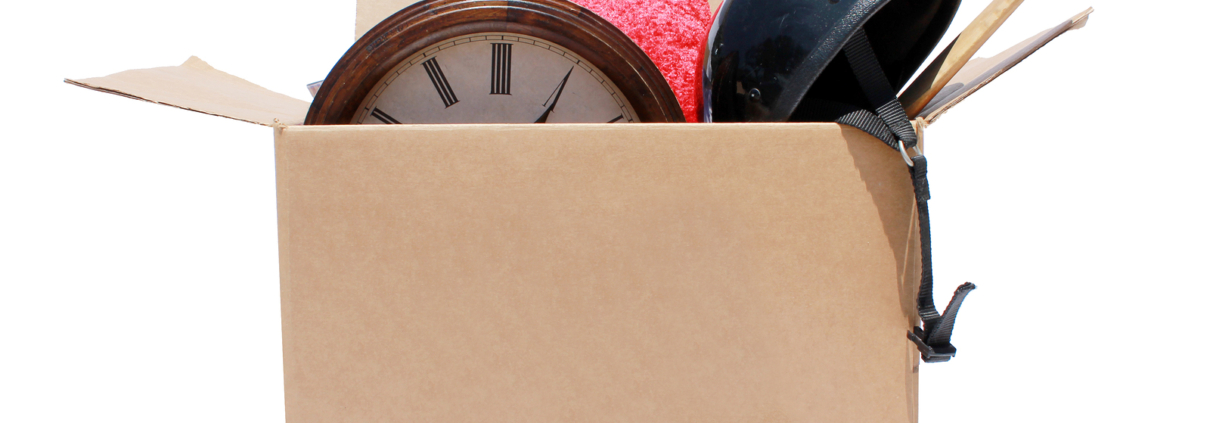Ready to Declutter Your Home? Take These 3 Steps First
Feeling pressured to declutter your home during the COVID-19 pandemic?
Ready to declutter and let go of the things that you no longer need, use or love?
Want to feel lighter and more in control of your belongings?
If you are ready to act, here are three steps to follow BEFORE you start decluttering that will help maximize your efforts, increase your efficiency, and ultimately lead to more success in the process.
To note: While it is important to prepare, it is also important not to let this become the barrier in your decluttering efforts. Don’t get too caught up in the planning! Follow these simple steps and then it’s time to simply begin.
Three Steps Before You Start Decluttering
-
Know “Why” You’re Decluttering
“Why am I doing this?” and “How do I want to feel afterwards?” are two key questions to ask yourself, as your answers will guide you forward.
Whether you want to feel less burdened by your belongings, have more control of your environment, create more free time, or something else, knowing your motivation for decluttering is a crucial first step.
To determine your “why”, you may want to think about what adds value to your life, as opposed to what depletes and adds stress to it. You may want to close your eyes and truly envision how your home will look, feel and function when it is decluttered. Visual clarity helps immensely in getting us closer to where we want to be.
Breaking this step down into smaller steps is also helpful. For instance:
- “I’d like to make healthier meals at home” translates into creating a functional, easy-to-access pantry of healthy items for the whole family.
- “I’d like to enjoy my living room again” translates into finding a practical home for your kid’s toys that are strewn all over the floor.
- “I’d like to see my desk” translates into finding a proper system to sort, organize and manage paperwork. Imagining the function and form of each space and working backwards from there will help your decluttering efforts.
-
Develop a Decluttering Plan: How, When, Where, Who
Once you know why you want to declutter and know how you want to feel, you need a plan to help you stay on track. You will want to think through the how, when, where and who of your decluttering plan.
How:
There are so many different decluttering strategies to choose from and picking which one works best depends on your personality, work style, time availability and goals. You can declutter by type of item (all winter clothing in your house, all memorabilia, etc.) or declutter room by room. This is when you can also decide if you are decluttering on your own, with family or friends, or with professional help.
When:
Depending on how much time you have, you may spend a few hours every day for a week, commit 1-2 full days to get it all done, or do a combination of the two. You may find once you get started, you won’t want to stop! Again, there is no one size fits all. Know yourself and your abilities. Adding decluttering to your calendar will help make it a priority and help you avoid the “it’s not the right time” way of thinking.
Where:
This may seem obvious, but it is important to make space for your keep, toss, donate, recycle, and action items, as visually seeing what you have all laid out helps in decision-making. Once you are done decluttering, move items out of sight to avoid second-guessing yourself. Quickly box or bag unwanted items and move them out of your house to avoid any lingering. Keeping a permanent donate box, bin or bag that is easily accessible makes it easy to add unwanted items at any time. Once it’s full, away it goes
Who:
Determining who will want your unwanted items is important to consider during your decluttering. It saves time and possible frustration at the end.
- Donating: think about which donation centres accept what you have and when you can take items there.
- Selling: think about where you will sell items and if it is really worth your time.
- Returning: pack up items and put them in your car or wherever you keep shopping items. After all your hard work, you do not want a pile of unwanted items cluttering up your home.
Setting realistic expectations while developing your decluttering plan is key. This will help you stay motivated to complete the work! Usually certain areas of a home are easier to declutter than others. For instance, closets and kitchens are normally faster and easier than mementos and books. Bathroom items are usually easier than paperwork. Knowing that it often takes longer than we think to declutter and organize effectively, leave yourself enough time and energy to do it well. Decluttering is more of a marathon than a sprint, so stay realistic and don’t forget to celebrate your wins.
-
Prepare your decluttering supplies
You don’t need too many supplies to declutter. But having these essential items will help make the process easier and more efficient:
- Big bags for trash, recycling and soft donate items
- Boxes for hard donate items
- Clear bins with lids of varying sizes for organizing items you are keeping
- Green tape and a marker to label your bins and boxes
- Stay hydrated, enjoy yummy snacks, listen to motivating music and enjoy the process
Following these three steps before you begin to declutter will help you declutter quickly, efficiently and effectively.
If it all seems too much, call Simply Home Downsizing at 416-819-1576. We offer services for decluttering, estate clearing, staging and more.










